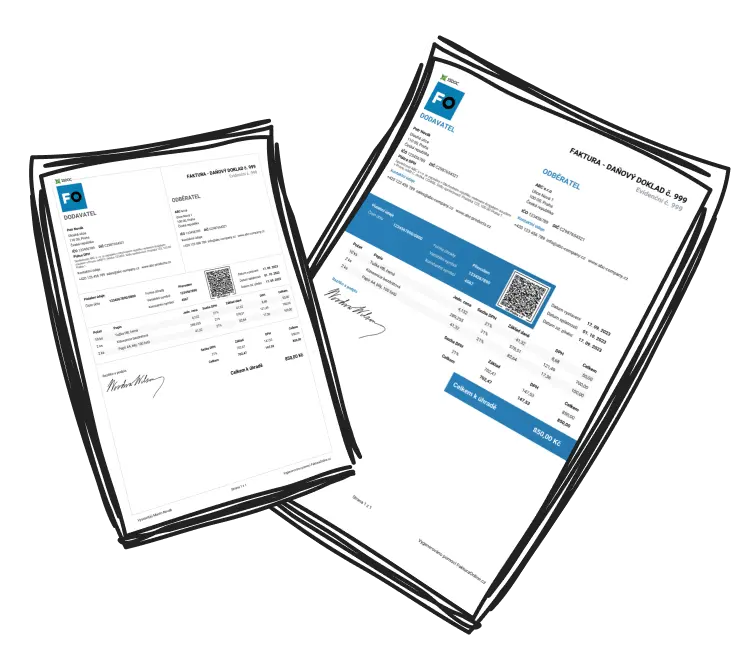An invoice for hours is a critical professional document that freelancers use to bill clients for work accurately based on the hours worked. It specifies the tasks completed, the hours worked, and the corresponding charges calculated at an agreed hourly rate. This helps freelancers validate their work while ensuring transparency with clients. For example, a web developer who spends 15 hours on a project at $60/hour can clearly show how the final bill was calculated. Hourly invoices are essential in industries requiring flexibility, time-specific deliverables, and mid-project adjustments.

Tip
Using hourly invoices not only reinforces trust between freelancers and clients but also promotes professional communication and accountability.
How Can I Create an Invoice for Hours?
Creating an invoice for hours may seem daunting, but it’s simple when you follow these steps:
Choose an Invoice Template: Decide whether to design one manually (using tools like Excel or Word) or use invoicing software like QuickBooks, Bonsai, or FreshBooks for automated creation.
Include Your Information: Add your name, business name (if applicable), logo, and contact details at the top of the invoice.
Add Client Details: Clearly include the client’s full name, company name, and contact information.
Label the Document: Title it “Invoice” and add a unique invoice number, issue date, and payment due date.
Itemize Hours Worked: Break down tasks, specify work done, dates, and hours spent on each task. Attach your hourly rate to calculate accurate totals.
Specify Payment Terms: Include instructions for payment (e.g., your bank details, PayPal email) and any applicable deadlines or penalties for late payment.
Review for Accuracy: Proofread all details to ensure the invoice is error-free and professional.

Example Image
Present a basic layout of an hourly invoice with sections for branding, client info, itemized hours, and payment terms prominently organized.
What Should Be Included in an Invoice for Hours?
Here’s a checklist of vital elements for crafting a professional invoice for hours:
Your Business Name and Logo: Adds a touch of professionalism.
Client Details: Include the client’s name, address, and contact information.
Invoice Metadata: Clearly state the invoice date, unique invoice ID, and payment due date.
Detailed Time Logs: Describe tasks performed, dates, and exact hours worked for clarity.
Hourly Rate and Totals: Include your hourly rate, task subtotal, and total payment due.
Payment Methods: Specify how clients can pay and details like bank account numbers or PayPal links.
Additional Information: Mention currency (for international clients) and extra charges like taxes or fees.

Tip
Always state payment terms—such as net-30 days or penalties for late payments—clearly to avoid misunderstandings.
Why Is It Important to Create an Accurate Invoice for Hours?
Accuracy in an invoice for hours ensures prompt payment and sets the foundation for trust between freelancers and clients. A detailed hourly invoice provides transparency, showing clients exactly where their money is going, which reduces disputes and fosters strong relationships. Missing or incorrect details waste time and could damage a freelancer’s reputation or hinder cash flow.

Errors in invoices can lead to legal disputes, accounting issues, and payment delays, impacting both cash flow and professional credibility.
How Can I Ensure My Invoice for Hours Is Comprehensive?
Follow these strategies for creating a comprehensive invoice for hours:
Track Work Consistently: Use tools like Toggl or Clockify to log hours accurately.
Use Software or Templates: Adopt invoicing tools like Harvest or quick templates for consistent formatting.
Provide Detailed Descriptions: Break down tasks with specifics like “Drafted logo concepts – 4 hours at $40/hour.”
Double-Check Math and Logs: Verify calculations to avoid overcharges or missed details.
Set Clear Expectations Early: Outline payment terms, including currency and deadlines, before starting the project.
Add Summary Notes: Include notes such as a thank-you message or information about discounts for early payment.
Ask for Feedback: Regularly ask clients if your invoices meet their expectations and adapt if needed.
Using time-tracking tools and well-organized invoice methods can save freelancers significant time while creating more professional and accurate invoices.


